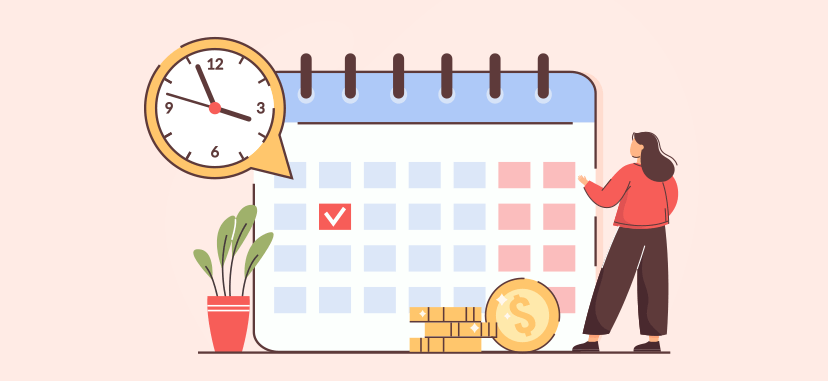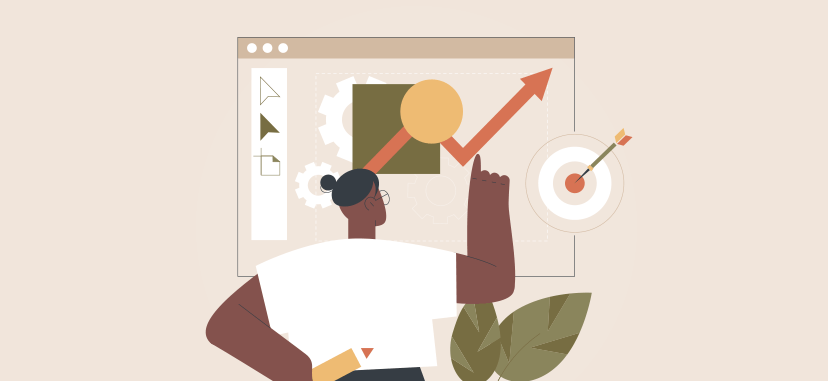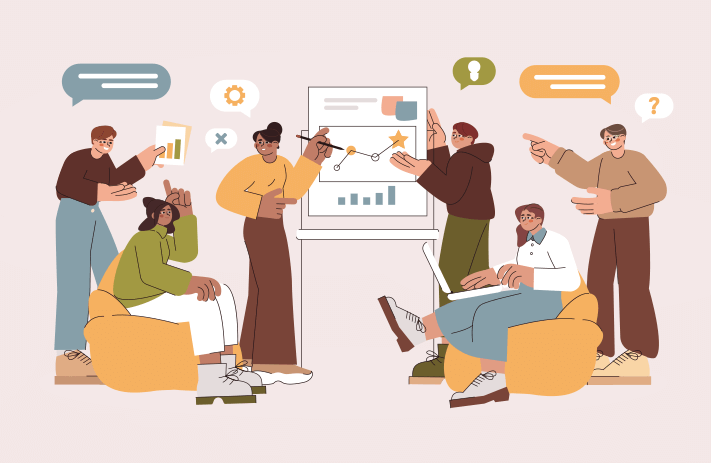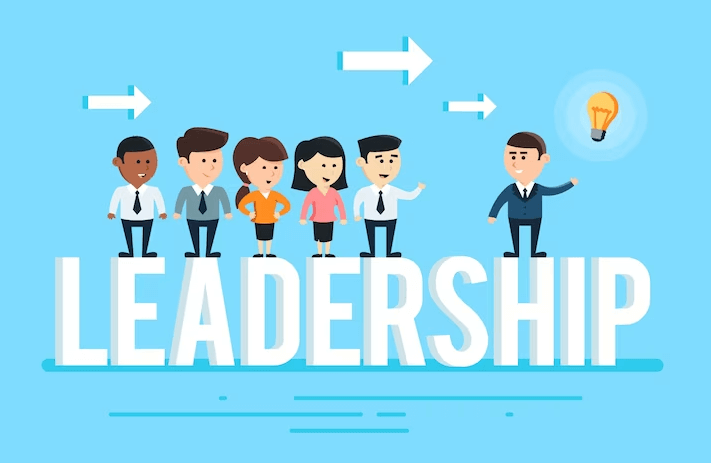
Click the button to start reading
From Chaos to Control: Managing your Design Project
Are you a project manager struggling to keep your design projects on track? Do you feel overwhelmed and need help managing all the different elements of your projects?
If so, you’re not alone. Design project management can be challenging, especially if you’re new to the role.
But don’t worry – we’re here to help. This post will outline the key strategies and tactics you need to master design project management. From setting clear goals and objectives to planning and scheduling effectively to managing resources and communication, we’ll cover everything you need to know to succeed as a design project manager.
So, if you’re ready to take your design project management skills to the next level, keep reading!

Setting Goals and Objectives
Before diving into the nitty-gritty of project management, it’s essential to set clear goals and objectives for your design project.
This will give your team a roadmap to follow and ensure everyone is on the same page. Here’s how to set goals and objectives for your design project:
Define the project scope and objectives
First, take some time to define the scope of your project. What is the project trying to achieve? What are the desired outcomes? Clearly articulating the scope and objectives of the project will help your team stay focused and ensure that the final product meets the client’s needs.
Identify key stakeholders and their needs
Who are the key stakeholders in your design project? These might include the client, the project team, and any other parties who have a vested interest in the project’s success. Identify their needs and make sure they are taken into account as you set your project goals and objectives.
Set clear and measurable goals
Once you understand the project scope and stakeholders’ needs, it’s time to set specific, measurable goals.
These should be SMART goals (specific, measurable, achievable, relevant, and time-bound) to ensure they are clear and achievable. For example, a SMART goal for a design project might be: “Design and launch a new website for XYZ company within six months to increase online sales by 20% within the first year.”

Planning and Scheduling
Once you’ve set your goals and objectives, it’s time to start planning and scheduling your design project. This will help you stay on track and meet your deadlines. Here are some tips for planning and scheduling your design project:
Create a timeline and schedule
Develop a timeline that outlines your design project’s key milestones and deliverables. This will help you keep track of progress and meet your deadlines. It would be best if you also created a detailed schedule outlining each team member’s specific tasks and responsibilities.
Assign tasks and responsibilities
Clearly assign tasks and responsibilities to your team members. Make sure everyone knows what is expected of them and when it is due. Use project management software to help you keep track of tasks and progress. Teamly is perfect for this.
Identify and manage project risks
No project is without risks, and it’s crucial to identify and manage potential threats as you plan and schedule your design project. This might include anything from client changes to unexpected delays or budget overruns. By identifying potential risks upfront, you’ll be better prepared to handle them if they do arise.

Managing Resources
Effective resource management is crucial for the success of any design project. Therefore, it’s important to identify the resources you’ll need and allocate them effectively to ensure that your project stays on track. Here are some tips for managing resources in your design project:
Determine the resources needed for the project
First, identify the resources you’ll need to complete your design project. These include design software, hardware, and team members with specialized skills. Make sure you clearly understand what resources you’ll need and when you’ll need them.
Allocate resources effectively
Once you’ve identified the resources you’ll need, it’s important to allocate them effectively. This might involve assigning tasks to the team members with the appropriate skills and experience or purchasing the necessary software and hardware. Make sure you have a clear plan for allocating your resources to ensure your project stays on track.
Monitor resource usage and make adjustments as needed
As your design project progresses, it’s important to monitor your resource usage and make adjustments as needed. This might involve reassigning tasks or adjusting your budget if you encounter unexpected challenges. By regularly monitoring your resource usage, you’ll be better able to stay on track and meet your project goals.

Managing Communication
Communication is key to the success of any design project. It’s like a conductor leading an orchestra – without clear communication, the project can quickly become disorganized and chaotic. Here are some tips for managing communication in your design project:
Establish a clear communication plan…
First, create a communication plan outlining how you’ll communicate with stakeholders throughout the project. This might include regular progress updates, meeting schedules, and specific channels for communication (e.g., email, phone, and in-person meetings). Then, ensure all team members are aware of the communication plan and adhere to it.
Regularly update stakeholders on project progress
It’s essential to keep your stakeholders informed of your project’s progress. This might involve sending regular updates, holding meetings, or presenting progress reports. By keeping stakeholders informed, you’ll be able to address any issues or concerns early on and ensure that the project stays on track.
Solve conflicts and address issues as they arise
As with any project, conflicts and issues are bound to arise. It’s essential to address these as they come up and find solutions that work for all parties involved. This might include mediating a conflict between team members or addressing a change request from the client. By tackling issues head-on, you’ll be able to keep your design project moving forward.

Managing Changes
Changes are an inevitable part of any design project. Whether it’s a client request to make design tweaks, an unexpected delay, or a budget overrun, it’s important to anticipate and plan for potential changes and to communicate them clearly to all relevant parties. Here are some tips for managing changes in your design project:
Anticipate and plan for potential changes
As you plan and execute your design project, anticipate potential changes that might come up. This might involve creating contingency plans for potential risks or being flexible and adaptable as you move forward.
By anticipating possible changes, you’ll be better prepared to handle them if they do arise. Some examples of changes that project managers might experience include:
- Client request for design tweaks
- Unexpected delays due to unforeseen circumstances
- Budget overruns due to additional resources or expenses
- Communicate changes to all relevant parties: If a change does come up, it’s important to communicate it clearly to all appropriate parties. This might involve holding a meeting to discuss the change or emailing the entire team. Keeping everyone informed will ensure that the project stays on track.
Ensure changes are aligned with project goals and objectives
Finally, make sure that any changes you make to your design project are aligned with your overall project goals and objectives. This will help ensure that the final product meets the needs of all stakeholders and stays true to the project’s vision.

Managing Team Dynamics
Imagine you’re working on a design project, and halfway through, your team falls apart. Morale may be low, or there’s a lack of trust between team members. Suddenly, the project grinds to a halt, and you’re struggling to get things back on track.
This scenario highlights the importance of managing team dynamics. Here are some tips for building a cohesive and productive team:
Foster a positive team culture
A positive team culture is crucial for the success of any project. Encourage team members to work together, share ideas, and support each other. Consider implementing team-building activities or hosting regular meetings to foster a positive team culture.
Encourage collaboration
Collaboration is key to a cohesive and productive team. Encourage team members to share their skills and expertise and work together to achieve project goals. Consider using collaboration tools, such as online project management platforms, to facilitate collaboration and communication.
Set clear roles and responsibilities
Team members need to understand their roles and responsibilities within the project. Make sure each team member knows what is expected of them and how they contribute to the team’s overall success. Consider creating a project charter or job descriptions to clarify roles and responsibilities.
Encourage continuous learning
Encourage team members to continuously learn and develop their skills. This might involve providing training opportunities or encouraging team members to take on new challenges. By fostering a culture of continuous learning, you’ll be able to build a team that is adaptable and ready to tackle any project.

Managing Client Expectations
Imagine you’re working on a design project, and halfway through, your client starts making unexpected changes and demands. Maybe they want to add new features or change the direction of the project.
Suddenly, the project timeline is thrown off, and your team is struggling to keep up. This scenario highlights the importance of managing client expectations and the consequences of not doing so. Here are some tips for managing client expectations in your design project:
Set clear boundaries
It’s important to set clear boundaries with your clients to ensure that everyone has a clear understanding of what is expected. This might involve establishing clear communication channels, setting expectations for response times, or outlining the scope of the project. By setting clear boundaries, you’ll be able to manage client expectations and avoid misunderstandings.
Establish open lines of communication
Open and honest communication is key to managing client expectations. Make sure to regularly update your clients on project progress and address any questions or concerns they may have. Consider using online project management tools to facilitate communication and keep clients informed.
Address change requests and manage client feedback
Change requests and client feedback are an inevitable part of any design project. It’s essential to address these requests and feedback promptly and professionally. Make sure to clearly communicate any changes to your team and ensure that the final product meets the needs of all stakeholders.

Review and Evaluation
As your design project nears completion, review and evaluate its progress. This will help you identify any issues or challenges and ensure that the final product meets your project goals and objectives. Here are some tips for reviewing and evaluating your design project:
Regularly review and assess project progress
As your design project progresses, regularly review and assess its progress. This might involve holding progress meetings, analyzing data, or reviewing completed tasks. By periodically checking progress, you’ll be able to identify any issues or challenges that need to be addressed.
Identify and address any issues or challenges
As you review your design project, be on the lookout for any issues or challenges that need to be addressed. This might involve reallocating resources, adjusting the timeline, or finding creative solutions to problems. By identifying and addressing issues early on, you’ll be able to keep your project on track.
Conduct a final evaluation of the project to determine its success
Once your design project is complete, it’s crucial to conduct a final assessment to determine its overall success.
This might involve collecting feedback from stakeholders, analyzing data, or reviewing project goals and objectives. By completing a thorough assessment, you’ll be able to identify areas for improvement and plan for future projects.
Conclusion
Congratulations! Following the tips and strategies outlined in this post, you’re now well-equipped to manage your design projects like a pro. By setting clear goals and objectives, planning and scheduling, managing resources, communicating effectively, and reviewing and evaluating your progress, you’ll be able to guarantee the success of your design projects and keep your team on track.
Remember, effective project management is all about being proactive, adaptable, and communicative. If you keep these principles in mind, you can lead your design projects to success.
















